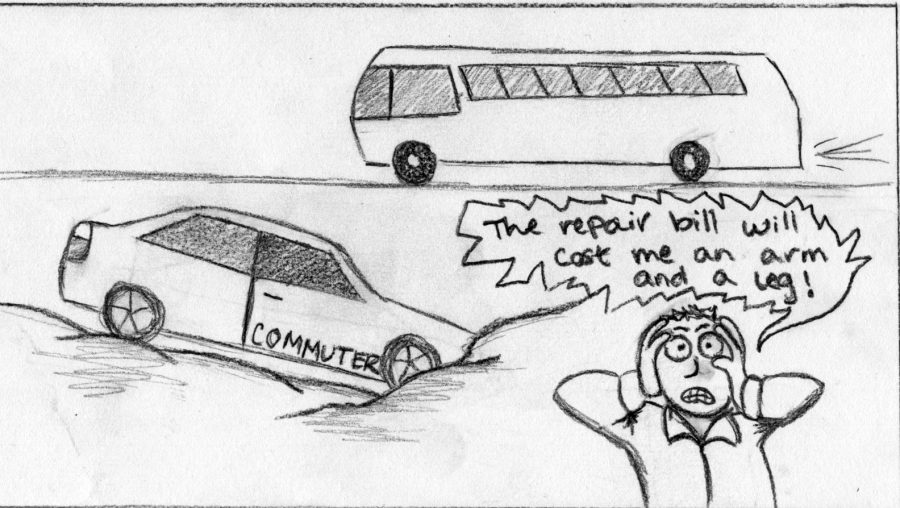By Josh Hafemeister
It’s not uncommon to hear UW-Whitewater called a “suitcase college.” The university houses many of its students, but there are many who live off campus and out of town. For commuters, the drive to campus can be expensive, and during the winter, dangerous.
UW-W needs to consider adding more busing routes for out-of-town students. The benefits of adding more busing for commuters include less money spent on gas and car maintenance, safer transportation during bad weather and more time sleeping.
Wisconsin highways can be extremely dangerous during the winter months. No matter how many years Wisconsin residents drive on the wintery roads, residents always drive as though they’ve never driven through snowy weather. This plus the fact that snow plows can only cover so many roads in so much time means getting to class can be deadly.
A response that might come to mind is, “Don’t drive to class then!” For students, missing class means contacting the teacher to catch up with the rest of the class, collecting notes, handing in assignments and finding out what is due next class period.
Having to go through this routine once is inconvenient, but when the winter weather gets dangerously poor and drivers have to choose to stay home often, this catching-up routine can be exhausting.
The cost of getting to class for commuter students is already high due to fluxuating gas prices. Add the cost of wear and tear on commuters’ cars and any repair costs that could be imparted after an accident, and getting to class every day becomes expensive.
Say a commuter drives roughly 30 miles to and from UW-W five days a week and pays nearly $200 a month in gas alone. That $200 does not include maintenance on the commuter student’s car, which include anything from oil changes, new tires, belts or a battery.
The current bus route that students can take advantage of goes from Janesville to Whitewater. A monthly pass for this route costs $45. Compared to the hypothetical example of the $200 gas bill per month, a monthly pass would save commuter students $155 per month.
Calculate that into a typical three-and-a-half month semester, and instead of spending $700 per semester on gas, a commuter student could spend only $157.50 for the bus.
Take that math and calculate it over a four-year college education, and the cost looks like this: the student who pays $200 per month on gas would pay $5,600 by the end of his or her fourth year. In contrast, a student who paid $45 per month for a bus pass would pay $1,260. That is $4,340 saved by taking a bus.
Other benefits of taking a bus include extra time studying while waiting to arrive in Whitewater or getting some extra sleep along the way. That hypothetical student who was paying $200 per month on gas will not only save money by taking a bus, but they will have the opportunity to potentially raise their grades with more study time and extra rest.
A 40-minute trip going to Whitewater and another 40 minutes back home five days a week means the commuter would spend six to seven hours driving each week. That’s six to seven hours could instead be dedicated to school work or other activities.
The next question is: where should another route go? One option would be Johnson Creek. Commuters who take the bus could take advantage of parking lots that already exist.
Johnson Creek is approximately 22 miles north of Whitewater and is where Highway 26 and I-94 meet. Students coming from Madison or Milwaukee can drive to Johnson Creek and park at the bus stop, saving themselves some fuel and approximately 22 minutes of driving. Other students from places such as Watertown, Waterloo or Beaver Dam would benefit from this option as well.
From time to money, there are many logical reasons why more busing routes should be available for UW-Whitewater students.


